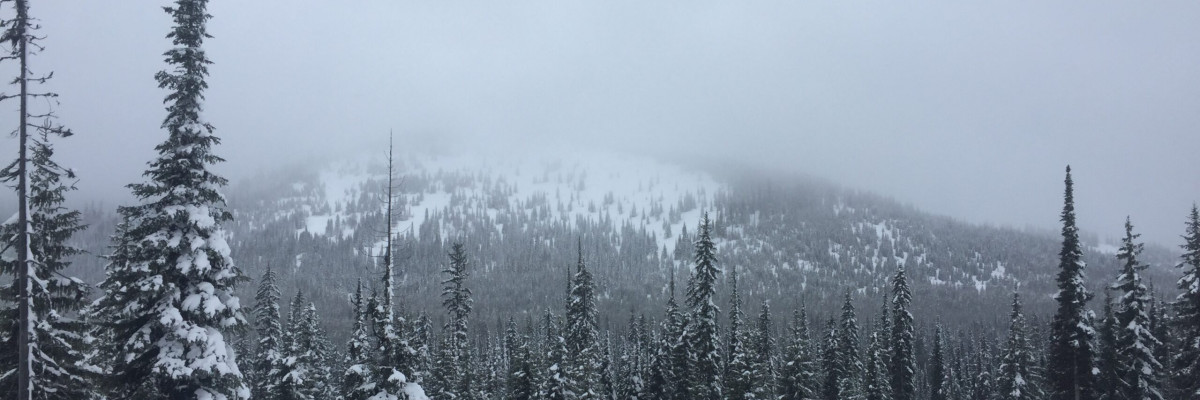A considerable avalanche danger exists on wind loaded terrain across the West Central Montana backcountry. On all other terrain the avalanche danger is moderate but is trending towards instability by this afternoon. Conditions will be dynamic today, continually re-evaluate conditions and terrain if you are out in the backcountry.
Good morning, this is Logan King with the West Central Montana Avalanche Center’s avalanche advisory for Thursday,February 08, 2018. This danger rating does not apply to operating ski areas, expires at midnight tonight and is the sole responsibility of the U.S. Forest Service.
Weather and Snowpack
Snow showers and rain continue to impact the region this morning. Over the past 24 hours 1-4 inches of snow have accumulated. Temperatures did not drop below freezing last night and rain is falling to about 5,500 feet as of 5 a.m. Water totals this morning are .5-1.1 inches from the Central Bitterroot to the northern extent of the advisory area. The Southern Bitterroot has had significantly less precipitations thus far. Winds this morning are out of the SW-WSW in the teens gusting to the upper-twenties.
Variable conditions are prevalent today and will require keen observation and evaluation. I toured near Lolo pass yesterday and found strong winds that were cross loading slopes. The wind loaded areas were touchy and shooting cracks were easy to initiate while traveling on or near wind deposits. Travis and Tim were in the Southern Swans yesterday and also found wind slabs along with signs of loose wet activity.
Wind slabs are the number one concern today. Winds were strong yesterday and have continued through the night. Large wind slabs have formed near ridges and smaller ones can be found on cross loaded terrain. Carefully look for signs of wind loading and if you observe shooting cracks or other signs of wind slabs move to a different aspect.
Mild temperatures and mixed precipitation are expected today which will lead to continued loose wet avalanche activity. Look for indicators such as roller balls to identify the surface instability and avoid terrain traps that increase the consequences of a small slide. Rain line is going to climb this morning until the cold front begins to move into the region later today. With extended rain on snow, wet slab avalanches can become problematic as the day progresses. Avoid steep terrain where the snowpack is showing signs of saturation as wet slabs are notoriously hard to predict.
Persistent slabs are the final problem that should be on your radar today. Buried surface hoar and crust have become less sensitive since the last storm cycle. Although less reactive these layers are now deeply buried, creating the potential for very large avalanches. Persistent slabs are low probability and high consequence, so avoid likely trigger points like shallow and rocky areas.
Avalanche and Weather Outlook
The forecast suggest rain to 6,000 feet across the advisory area today and dropping this afternoon leading to heavy snow into friday. Strong winds are also expected and look to shift directions as the front approaches. Conditions have the potential to change rapidly today and are largely dependent on timing. Avalanche conditions will be on the rise as precipitaion and winds increase.
Ski and ride safe.
























